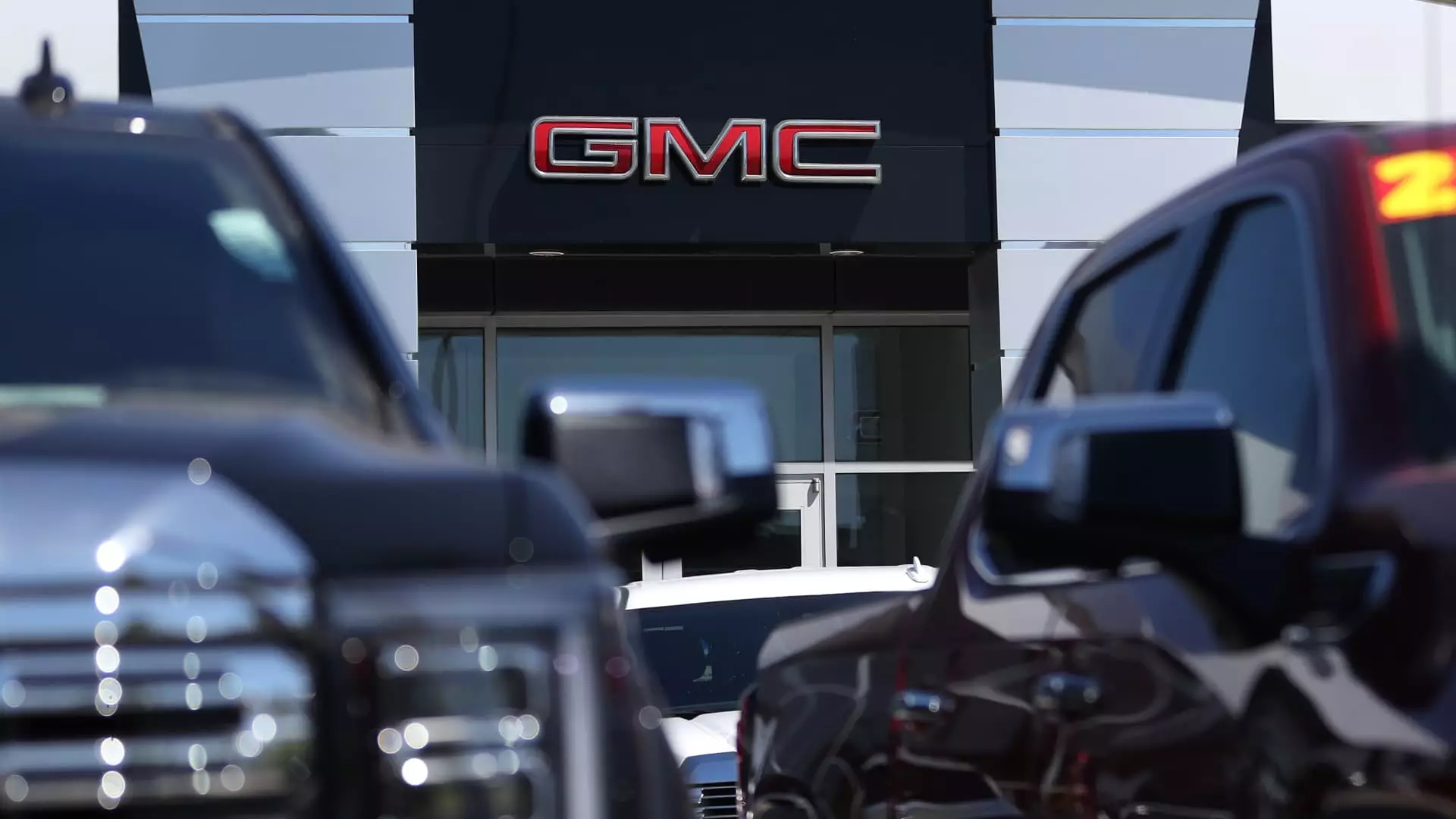General Motors (GM), a titan in the automotive industry, has been actively preparing for the challenges that lie ahead as it progresses into 2025. During its most recent investor day, Chief Financial Officer Paul Jacobson indicated that the company anticipates its adjusted earnings for 2025 to be in a “similar range” as this year’s projections. With targeted earnings before interest and taxes (EBIT) for 2024 ranging between $13 billion and $15 billion, corresponding to $9.50 and $10.50 per share, GM is maintaining an optimistic outlook despite a landscape that appears to be growing more perilous for automakers.
The backdrop of slowing auto sales and consumer spending looms heavily, with many Wall Street analysts predicting that 2025 could present a notable downturn for the industry. Jacobson opted to withhold specific financial targets until the formal release of GM’s 2025 financial guidance early next year, indicating a cautious approach given the shifting tides in consumer behavior and market conditions. This hesitation points to an awareness within the company of the volatile environment they are navigating, where traditional revenue models are being upended by new technological demands.
A key component of GM’s projected financial performance is its foray into electric vehicles (EVs). Jacobson suggested that $2 billion to $4 billion in enhanced earnings from EV sales could buffer against an overall projected decline in automotive profitability. This perspective reflects a growing recognition of electrification as not merely a trend but a vital component of the future of transportation.
Interestingly, GM has committed to introducing eight new vehicles to the market that are expected to achieve EBIT margins nearly nine points higher than previous models. This shift is expected as the company embraces advanced engineering and more effective production methodologies, signifying a strategic pivot in its operational processes. This initiative shines a spotlight on how traditional automakers like GM are adapting to remain competitive amidst tightening margins and increasing consumer expectations.
In a broader context, GM’s CEO, Mary Barra, noted the company’s intention to produce and wholesale around 200,000 EVs in North America by 2024, marking a significant milestone in its electrification plan. However, this figure represents a downward adjustment from earlier targets, eliciting questions about the capability to meet these projections amidst fluctuating market dynamics. Barra’s assertion of reaching profitability on a production basis by the end of this year reflects a cautious optimism, underscoring both the urgency and the difficulties of achieving sustained growth in a rapidly evolving sector.
In addition to expanding its EV capabilities, GM’s strategy also emphasizes cost management. With fixed costs decreasing by approximately $2 billion over the past two years, GM seeks to enhance its competitive edge while maintaining relatively stable demand for its traditional gas-powered vehicles. This financial discipline is crucial as external pressures—such as shifting consumer preferences and increasing competition from both new entrants and established players—continue to reshape the automotive landscape.
As GM prepares for 2025, its dedication to efficiency translates to anticipated capital expenditures mirroring those from this year, projected between $10.5 billion and $11.5 billion. This approach reflects a conservative yet pragmatic stance, encouraging steadiness while investing in future product lines and technologies. Such investments are particularly important in a context where battery production and raw material costs remain critical determinants of profitability.
Overall, while GM’s current standing in the market appears relatively strong—evidenced by a 28% increase in stock price this year—the challenges looming on the horizon are multifaceted. The company faces the ongoing necessity to innovate while contending with a more intricate competitive framework. As GM repositions itself in the face of financial pressures and consumer expectations, adaptability will be paramount.
Ultimately, the steps GM takes in the upcoming months will define its trajectory as it navigates the complexities of an automotive sector at a pivotal crossroads. The need for vigilance, strategic foresight, and a willingness to embrace change will prove essential for GM as it endeavors to maintain its legacy while growing within a modern, increasingly digital-driven marketplace.

